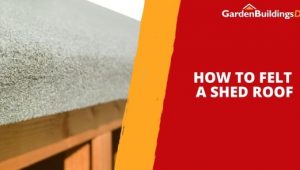Jump to:
Concrete sheds aren’t that common, but you might be surprised at how beneficial they can be for you!
Wooden sheds, plastic, and metal ones are the standard materials that most people are aware of. But there’s another one that you might haven’t heard of until now, and that is concrete.
Concrete buildings garden sheds are durable and secure. In fact, they offer an alternative solution to wooden sheds.
There’s a wide range of ready-made concrete buildings for garden use. And if you’re thinking of investing in a new shed, we thought it should give you an overview of how good concrete sheds can be.
Key takeaways:
- A concrete base is one of the crucial factors when installing a shed in outdoor spaces, along with it being level. A good solid and level foundation is always required, especially for wooden sheds.
- Using a concrete material both as the base and the walls can offer loads of benefits. But one of the major benefits is the strong foundation with solid structure all at once.
- As with wooden sheds, plastic sheds, and steel sheds, their concrete counterpart also has some aspects you need to consider.
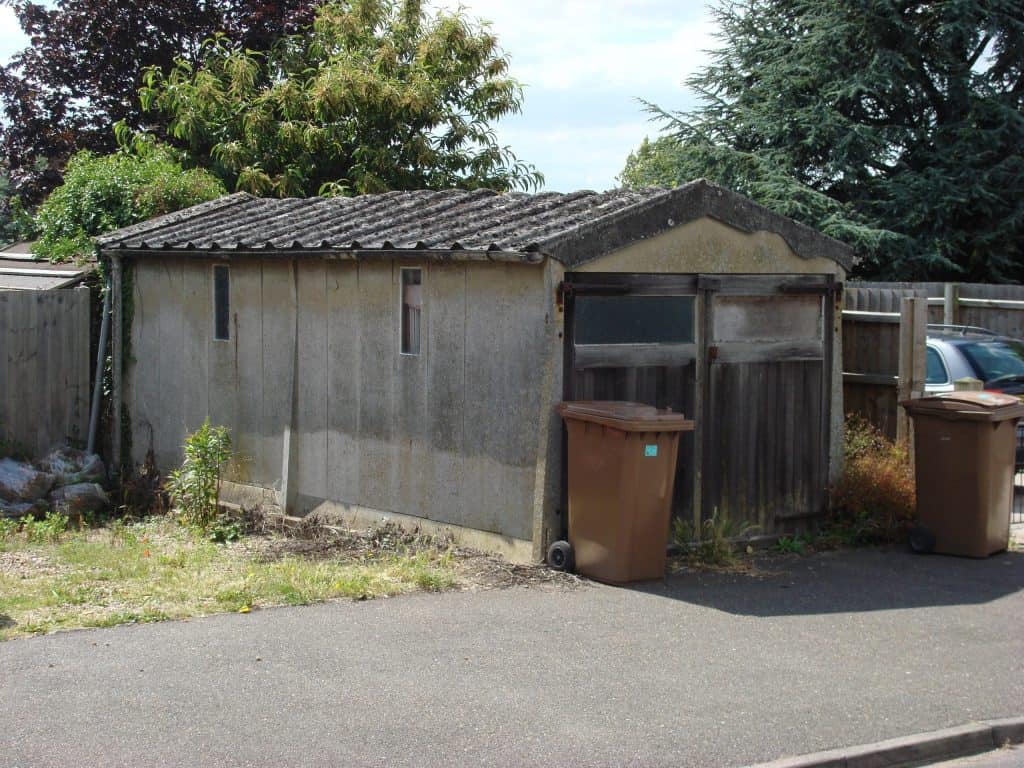
Overview of Concrete Sheds
Before installing an outbuilding IN a yard, a levelled and flat base is required. Most experts believe it’s a critical part of the installation process.
A poorly planned foundation can result in premature deterioration of a shack or any garden room. For one, garden buildings tend to sink into their foundation over time.
A bumpy base can also result in misaligned door and window frames. Opening and shutting them can be bothersome, and you’re likely to cause them to crack or break in due course.
As a result, these gaps can pave the way for rainwater to come in, inducing more damage. See how crucial it can be to have a concrete shed base?
In conditions like these, this is where a concrete base becomes useful. It has a major influence on how a garden structure will function in the long run.
But mind you, concrete isn’t only ideal for the shed’s base. Many experts prefer and recommend it for building shed walls as well.
Hence why opting for a concrete structure like a shed might be worth a shot for your outdoor needs.
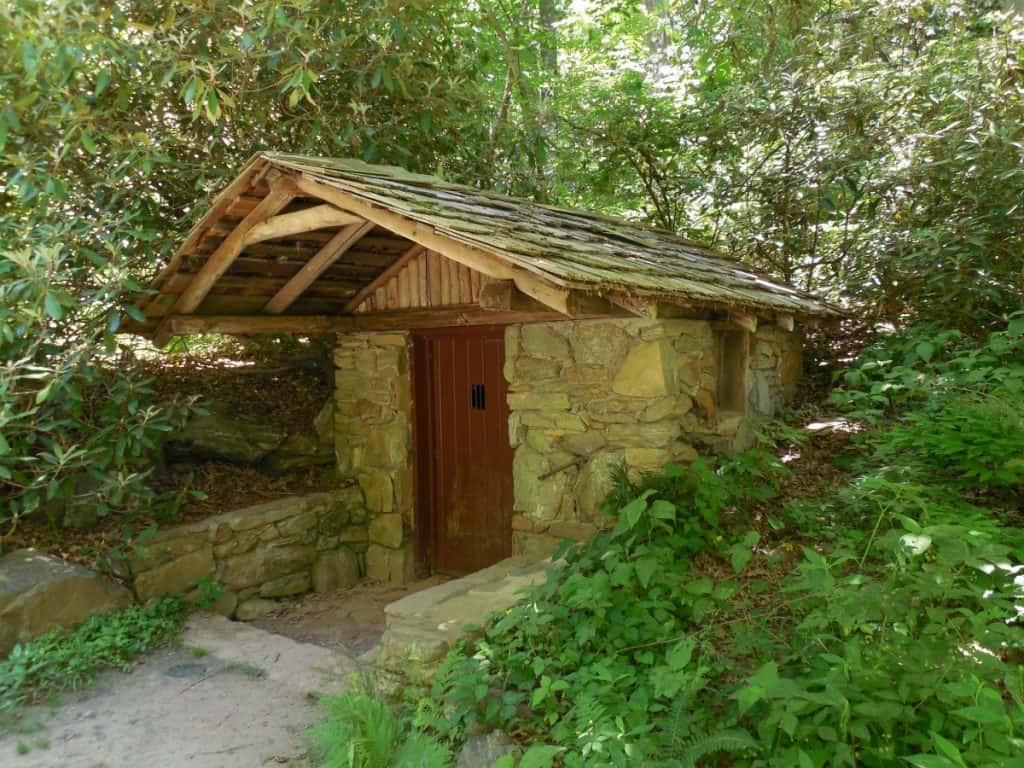
What are concrete sheds?
A garden shed makes a great practical storage solution, regardless of the material. And this includes concrete sheds.
Sheds made using concrete are more common in the categories of showrooms and garages, though. For one, these types of outbuildings need to have a strong foundation with an even and intact surface.
This is something a concrete base never fails to offer. The surface is solid such that even the largest and heaviest model remains stable and precisely aligned.
But due to the high cost and labour-intensive process of building a concrete shed base, you may hesitate to go for this route. Considering the durability and steadiness, though, it could benefit you in the end.
In short, a concrete shed consists of a solid base and walls – the overall structure is concrete, except for the roof of course. It provides long-lasting strength and stability, which is why many experts favour it.
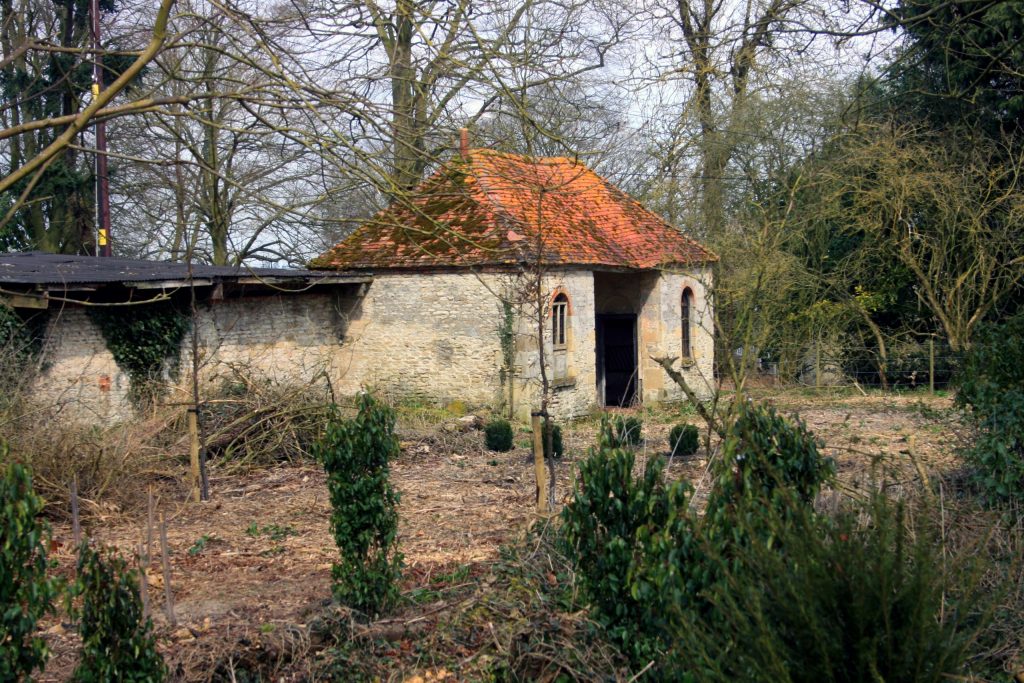
Sizes and varieties
Concrete sheds are available in a huge range of forms, but the common ones include:
- Precast concrete sheds
- Prefab concrete sheds
They’re also available in a variety of sizes to fulfil different needs. Some manufacturers or retail stores even allow you to customise your concrete building.
For instance, adding extra windows, side doors, and insulation. Like most garden buildings, concrete sheds are also capable of adjusting to any of your needs.
To a concrete garden theme, this type of outdoor structure would be a great addition.
How Much Does a Concrete Shed Cost?
As there are likely more high-quality materials used in a concrete shed, chances are the price tag in the market is relatively high as well. Even a small 4ft x 4ft shed made of concrete is around £1,800, in general.
So a bigger unit can cost more than £2,000. But who knows? You can possibly find cheaper prices once you shop around, be it in-store or via brochue.
But prepare to increase your budget as we’re talking about concrete material here, a.k.a. one of the most expensive building materials available for larger projects.
Choosing Concrete Over Another Material
Generally speaking, a concrete shed may not be required if you decide to utilise your shed as a storage unit for your garden equipment. Wooden garden sheds, as well as plastic and metal storage sheds, will suffice.
But if you plan to use your building as an alternative space for a hobby or as a workspace, this could sway you towards a concrete structure.
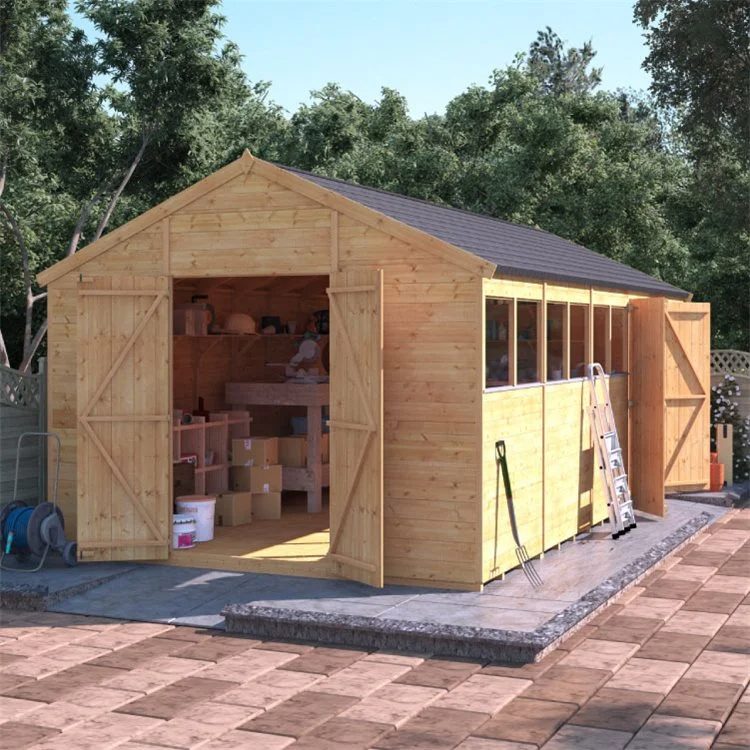
Concrete garden shed vs Wooden secure storage shed
Wooden sheds installed on an unstable foundation can eventually lead to deterioration. But this isn’t the only issue that could reverse its more than ten years of lifespan.
Standing water, including rainwater from heavy rain, can damage a wooden structure, resulting in rot and decay. Not only that, but once the water gets in, this could also compromise the stored items.
So in terms of performance, concrete might outperform timber. For one, an outbuilding with a concrete base and walls won’t rot and (if built well) is less likely to deteriorate.
It’s likely to last far longer and withstand harsher weather conditions than any other material, as well. What’s more, if the exterior of your shed has a pebbledash or traditional brick finish, you’ll have a hard-wearing and low maintenance building.
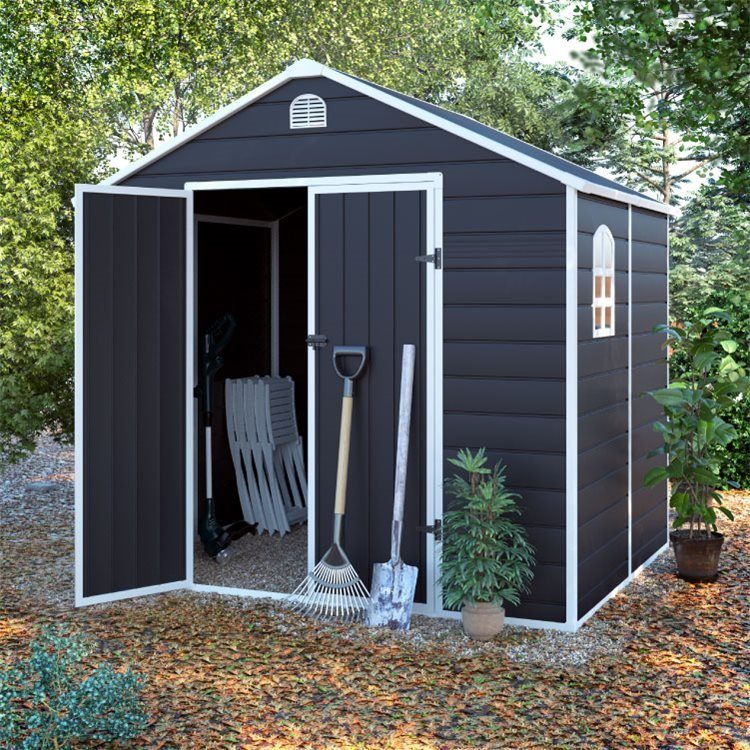
Concrete shed base vs Plastic shed base
Plastic sheds are cost-effective and eco-friendly models. The installation process also requires less effort.
Most plastic shed bases consist of interlocking panels. If you find a high-quality model like the BillyOh Ashford, you won’t have to pay a high cost for a concrete one.
But again, when talking about durability and strength, a concrete structure exceeds plastic. Although a plastic shed base is also durable, concrete makes the ideal choice for maximum durability.
Most concrete garden rooms are made using strengthened solid concrete and steel bars. They can last for 10-15 years or even more with the proper maintenance and treatment practices.
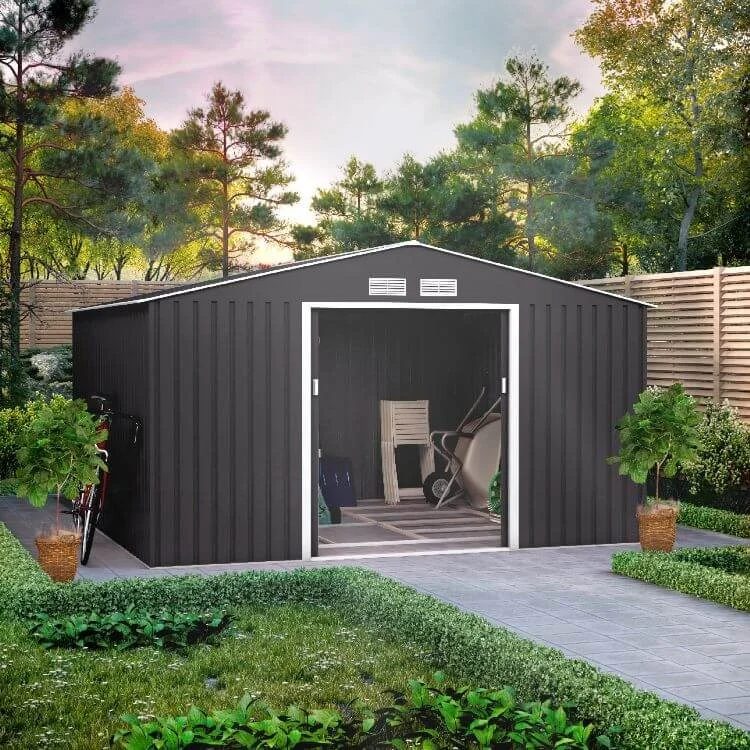
Concrete garden building vs Heavy-duty metal sheds
Steel outdoor structures are one of the popular materials in the category of heavy-duty metal sheds. There’s a wide range of metal sheds available in the market, too.
They make a cost-effective, simple storage solution for all year round use. But despite being a robust material, concrete tends to overcome it when it comes to:
- Durability
- Thickness
- Aesthetics
And while a selection of metal sheds can work well in most climates, some are prone to rust – unless you shop for metal sheds made from galvanised steel. Concrete outbuildings, on the other hand, are resistant to this.
Plus, the thickness of concrete partition walls is usually far more than that of metal buildings.
Top Benefits of Concrete Sheds
Concrete seems to be an excellent choice if you want to have a stable base for your shed. But on top of strength and enduring durability, concrete sheds offer a variety of benefits. Check them out below!
1. Versatility
A concrete shed base is an excellent foundation for installation. But it’s also versatile as it can act as an establishment for a variety of spaces. Whether it’s running a home office or a full-blown business, you could do it all from a concrete shed.
2. Simple and low maintenance
Timber materials need maintenance. But concrete doesn’t need much care. Its toughness is enough to reduce maintenance jobs; meaning less treatment.
Regular mopping or a water blaster to remove the grime off the surface will suffice.
3. Safety with stability
Concrete sheds make for a good space when for storing garden tools, industrial and larger garden equipment, as well as heavy vehicles! This is because concrete can withstand the harshness of the elements.
A concrete shed building also guarantees a higher level of security. They’re also resistant to fire and rot and keep the moisture away.
4. Aesthetics
A concrete surface doesn’t have to be dull in terms of aesthetics. You can transform the look into a vibrant one, by methods such as acid staining.
There are many creative options, designs and style ideas available out there! Instead of sticking to a grey colour, let your imagination run wild and make your concrete shed look extremely attractive!
5. Cheaper than traditional brick models (but still expensive!)
Concrete sheds may be costly, but they are cheaper than bricks. The total cost of a concrete model is around one-third of a similar brick building.
This is perhaps why many homeowners prefer concrete in their garden spaces; it saves them both time and money. You can even outline a concrete shed with brick fronts, uPVC doors, or a window skylight. But what’s cheaper than concrete? Wood, metal, or plastic!
The Bottom Line
If you want a garden building with excellent weather resistance, longer durability than usual, and more security than the standard materials, concrete sheds could be the perfect solution! One final point, though. If you choose a concrete shed, you’ll want to make sure the size is within your area’s permitted development. Otherwise, planning permission may be required.
But the main reasons most of us don’t go for concrete sheds are the cost, time, and effort. That’s why you could get set up with a BillyOh shed in your choice of material and size way quicker instead! Just click the button below to shop our extensive range.
Shop The Storer ShedFAQs
How long do concrete sheds last?
If well-maintained, they should last 15-20 years. They could last a few more years if there's no severe structural repairs or any damage.
Does a storage shed need a foundation?
Generally, a shed needs a foundation for longevity. There are more benefits to having a base than to not having one.
Note: This also applies to wooden, plastic, and metal garden sheds.
Do I need a concrete slab for a shed?
No, in most cases. But if it's for a concrete garage (e.g. motorbike garages), or a larger log cabin, a concrete slab is recommended.
Does a shed base need to be bigger than the shed?
When preparing your shed base, the foundation must be built bigger than the building.





